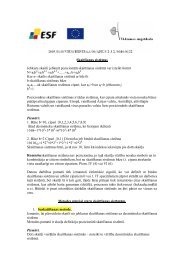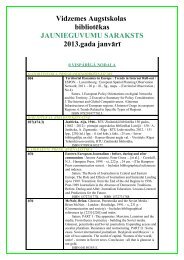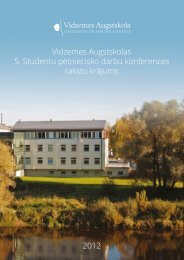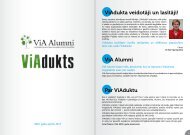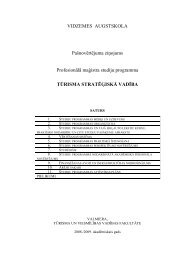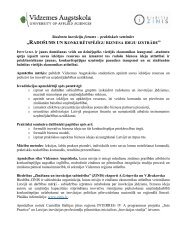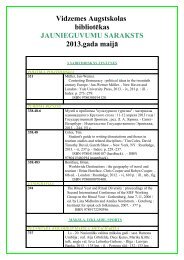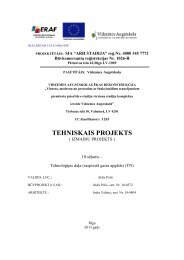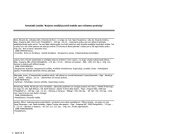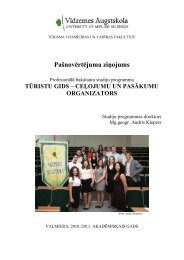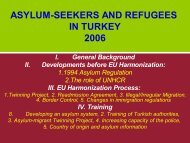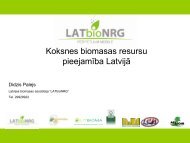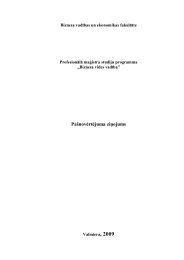Proceedings
Proceedings
Proceedings
You also want an ePaper? Increase the reach of your titles
YUMPU automatically turns print PDFs into web optimized ePapers that Google loves.
Foreword<br />
As society’s dependence on the resources delivered by<br />
ecosystems increases, due in large part to a burgeoning<br />
global population and escalating consumption, our<br />
ecosystems are experiencing increasing stress, and the<br />
need to assure ecological sustainability has become<br />
widely recognized. Healthy ecosystems are inextricably<br />
linked to healthy economies, and both are directly<br />
linked to a healthy quality of life. The United Nations<br />
Educational, Scientific and Cultural Organization’s<br />
(UNESCO) Biosphere Reserve Program was established<br />
to facilitate research and information sharing to advance<br />
healthy ecosystems, healthy economies, and healthy<br />
societies and cultures, which are integrated in the term<br />
sustainable development.<br />
The North Vidzeme Biosphere Reserve (NVBR)<br />
designated by UNESCO in 1997 is one of 531 biosphere<br />
reserves in 105 countries around our globe. Biosphere<br />
reserves are areas of terrestrial or coastal ecosystems<br />
internationally recognized for promoting and<br />
demonstrating a balanced relationship between humans<br />
and nature. The principle tenants of the Biosphere<br />
Reserve Program include the conservation of ecosystems,<br />
landscapes, species and genetic variation; the promotion<br />
of economic development at the local level that is socially,<br />
culturally and ecologically sustainable; and support<br />
for scientific research and monitoring, education, and<br />
information sharing on issues of biodiversity conservation<br />
and sustainable economic development.<br />
The Second Scientific Conference of the North<br />
Vidzeme Biosphere Reserve attracted over a hundred<br />
local, national, and international participants and<br />
provided an excellent platform for presenters to share<br />
successes and challenges with respect to advancing<br />
ecological, economic, cultural and social sustainability.<br />
The papers delivered at the conference can be grouped<br />
into the disciplines of planning, tourism, and monitoring.<br />
A short synopsis of the delivered papers follows.<br />
Sustainable development depends on strategic<br />
planning at the local, regional, national and international<br />
level. Melluma et al’s paper describes how the<br />
Latvian government’s endorsement of the European<br />
Landscape Convention in 2007 is contributing to a<br />
holistic understanding of landscape conservation and<br />
management systems. The Vestiena protected landscape<br />
area is a prime example of planning for integrating<br />
cultural and natural heritage. The paper by Bāra et al<br />
illustrates the importance of completing the mapping of<br />
the specially protected nature territories in Latvia so that<br />
managers and developers have current information with<br />
which to avoid incompatible development that could<br />
threaten the habitats of the species of the European<br />
Union and international importance. Neimane and<br />
Zariņš demonstrate the value of Geographic Information<br />
Systems (GIS) for planning purposes to ensure resource<br />
availability, economic efficiency and sustainable use of<br />
biomass for heat and power production. The Atstāja paper<br />
demonstrates the need for a Latvian national pollution<br />
inventory to prioritize and guide pollution prevention,<br />
and, concomitantly, effective mechanisms to inform<br />
the public and decision makers of the enviromental<br />
consequences and economic rationale for pollution<br />
prevention. Cochua’s paper on the Caucasus Ecoregion,<br />
one of the 25 globally significant biodiversity hotspots,<br />
provides a good example of an international government<br />
and non-government cooperative landscape planning<br />
exercise to address ecological and economic stability.<br />
Sustainable tourism is proving to be a tangible<br />
economic driver in many countries, but only after<br />
adequate planning, collaboration, and infrastructure<br />
development, which often takes a number of years.<br />
The papers by Klepers et al and Bērziņa discuss<br />
the importance of entrepreneurial and institutional<br />
collaboration and provide examples of the cluster concept<br />
from the Rāzna National Park area and hierarchy analysis<br />
in Amata county. Grizāne addresses environment and<br />
tourism complexities with respect to minimizing visitor<br />
impacts. Kawata explores the two types of natural<br />
resource use – consumptive and non-consumptive – and<br />
demonstrates how these must often be balanced to ensure<br />
the conservation of the local landscape.<br />
Sustainable development also depends on sufficient<br />
monitoring at all scales. Whitelaw et al illustrate<br />
the valuable role of community-based monitoring in<br />
engaging government and citizens to track and respond<br />
to issues of common community concern. Mongin<br />
et al’s paper on the Great Snipe and Black Grouse<br />
explains how maintaining a mosaic of habitat types, and<br />
balancing consumptive use, is essential to biodiversity<br />
conservation. Both Wilson et al and Mongin et al’s<br />
5



